Red tape is set to clog up the flow of goods between GB and Northern Ireland under the proposed Brexit deal. How can food and drink supply chains adapt, or will supermarkets pull out?
The issue of Northern Ireland has plagued the Brexit process like no other.
It has threatened the Good Friday Agreement, fatally undermined Theresa May’s premiership, and is now at risk of bringing down EU negotiations entirely.
But the implications stretch far beyond politics. Questions marks over the future of Northern Ireland are posing the food industry with some of its trickiest problems in years.
The Northern Ireland protocol section of the withdrawal agreement reached last year was meant to solve the issue, but Boris Johnson appears to be reneging on the deal.
“There will be no checks on goods from Great Britain to Northern Ireland,” he said last year, despite the protocol stating the contrary.
His seeming abandonment of the agreement has left the future of food in the region shrouded in unknowns, as the industry urgently seeks clarity on the government’s intentions.
So how will supply chains adapt? Can retailers sustain their Northern Irish operations? And what’s the situation for suppliers?
The EU argues a border is necessary down the Irish Sea in order to protect the integrity of the single market. As the UK is now out of the customs union, it says, checks must be enforced on any goods that cross European borders.
If a border did not exist down the Irish Sea then a hard border between Northern Ireland and the Republic would be necessary, a solution widely seen as unacceptable due to the risk it could reignite the violence that has plagued the region in the past.
“This lack of clarity is having a terrible impact on food and drink businesses”
But this week, appearing in front of a House of Commons select committee, Michael Gove refused to give businesses the clarity they so urgently crave.
It is “a matter for the joint committee”, he said, referring to the EU-UK body set up to oversee the implementation of the agreement.
The evasion did not go down well with business leaders. “This lack of clarity may be used as a negotiating tactic with the EU but it’s also having a terrible impact on food and drink businesses that need to work out what they are going to do come the end of the year,” says Dominic Goudie, head of international trade at the Food & Drink Federation (FDF).
Stephen Kelly, CEO of Manufacturing NI, agrees. The government must stop claiming there will be no checks down the Irish Sea or it will have a “catastrophe” on its hands, he said at an Institute for Government debate earlier this month.
Retailers
Supermarkets could be one of the first in the firing line. Most fill their shelves from distribution centres in Great Britain, with many of the goods coming via complex supply chains that criss-cross both the land border with Ireland and the Irish Sea during production.
Some retailers will of course be better placed than others. Tesco and Lidl, for example, have operations in the Republic of Ireland, leaving them able to supply their Northern Irish stores from regional warehouses if border checks and tariffs become too much of a burden.
Tesco is of particular importance to Northern Ireland as the largest retailer in the region, maintaining over 50 stores and accounting for a third of all regional sales, according to Kantar data.
However, other retailers could be more vulnerable. Sainsbury’s and Asda, for example, despite both holding about 17% of the Northern Irish market, lack any infrastructure or operations south of the border.
“If you’ve got a store that only has an NI presence, that certainly makes it more difficult. There probably are less options,” says Seamus Leheny, Northern Ireland policy manager at the Freight Transport Association (FTA).
The issue is the potential scale of paperwork on goods that will come across from GB. Lorries are designed to carry a complex array of goods and can often contain over 1,000 different product lines, each now requiring its own customs documentation.
But perhaps the biggest challenges lie with animal products such as meat, cheese and eggs. These could likely require health and sanitary checks, veterinary sign-off, and considerably more inspection.
A single lorry can often contain 800 animal product lines, each of which can take 15 minutes for officials to check, according to Sarah Louadi, European policy manager at the FTA. As up to half can be inspected at the border under current processes, there is the possibility a single load could be delayed for up to four days, in addition to costs of £15 to £56 for every customs declaration, according to a government impact assessment. That’s £6,000 per lorry, according to one supermarket’s calculation.
Higher costs?
With some supermarkets bringing 30 to 50 trucks across each day, this could very quickly become insurmountable to retailers that operate on fine profit margins.
“The system works for trade with the rest of the world. It will not work for volumes that go between the UK and the EU,” says Louadi.
The government said it will negotiate with the EU for simplified forms used by countries like New Zealand, but few believe this is enough.
“New Zealand is shipping large quantities of a single commodity over a period of days where the export health certificates can be prepared and sent in advance,” says Andrew Opie, director of food and sustainability at the British Retail Consortium (BRC). “They’re not dealing with multiple, complex just-in-time supply deliveries that are crossing a border every day.”
There will need to be “fundamental changes to the way we do business” unless a better solution is found, says Aodhán Connolly, director at the Northern Ireland Retail Consortium (NIRC).
“If the new costs are higher than the profit margins, then either the product or the business model becomes unviable,” he says. “It doesn’t matter whether the costs are 10% more than the profit margin or 50%. If they’re bigger than the profit margin, we have a problem.”
Food shortages
One of the few reassurances at the moment is that food shortages are unlikely.
“I can’t imagine any situation where Northern Irish customers are going hungry,” says Michael Bell, CEO at the Northern Ireland Food and Drink Association (NIFDA).
“We export 80% of what we produce. We can feed seven million people. We’ve only got 1.8 million.”
But in preparation for potential turmoil, supermarkets are reportedly already exploring alternative options to the existing routes that supply Northern Ireland with food.
At the moment trucks bringing goods such as fruit and vegetables from Europe enter Northern Ireland via the British ‘land bridge’. But retailers are now considering rerouting supply chains from Europe directly to Ireland, skipping out British ports entirely.
“People are now exploring European trucks coming directly into Ireland… and then those distribution centres supplying stores north and south,” says Leheny at the FTA.
Fortunately for those like Sainsbury’s, Asda and Marks & Spencer, without Irish operations, distribution centres south of the border may not even be necessary, with haulage companies taking entire responsibility for the products’ transit into Northern Ireland, says Leheny.
“I can’t imagine any situation where Northern Irish customers are going hungry”
But despite initial conversations, enacting any such plan remains a way off.
“No one is going to jump into that until they know how the protocol is going to work,” he says.
Supermarkets may be in the early stages of considering supply changes, but many food manufacturers have already done so. The risk of a no-deal Brexit last year pushed many to outsource production to processors in mainland Europe last year, says the FDF’s Goudie.
“[Their operations] in mainland Great Britain service the home market and the production for the rest of Europe is done elsewhere,” he says.
It will make it relatively simple to adjust things for Northern Ireland if necessary.
“That includes for Ireland, so it won’t be a huge leap for them to just move that stuff from the Republic of Ireland to the north.”
The shift could be easier for big companies, however, as they are more likely to have alternative sources of production in other countries. But smaller companies must consider the risks of outsourcing production to a potential European competitor.
“That’s a much tougher decision to make about whether maintaining market presence in NI is worth their while,” says Goudie.
Such issues in themselves are cause for concern for a business of any size. But the issues emerging from Northern Ireland stretch far beyond tariffs and border checks.
Rules of origin
Businesses remain in the dark on issues that stretch across their operations, from labelling and assurance schemes to regulations and rules of origin.
Rules of origin - the means by which governments determine where a product originates - is cause of particular angst.
From next year the UK will be required to prove the origin of the goods it exports to the EU. It is a means by which Brussels will prevent the UK being used as a back door for other countries to smuggle their goods into the single market.
Although this will be relatively simple for single-ingredient foods like beef, it could become considerably more complicated for multi-ingredient products.
A tin of soup, for example, could contain carrots from England and coriander from India. Is it a British product or an Indian product?
The answer is technical and depends on the proportions of each ingredient, but is vital in determining whether a product can have preferential access to the European market.
“Businesses need sight of what the requirements are very early on to adjust their supply chain”
Given the huge number of products that cross between Ireland and Great Britain, businesses are urgently calling for clarity on whether Northern Ireland will be treated as British or European.
Otherwise, what may come of foods such as cottage pie? The cow could be reared in Ireland, move north to Northern Ireland for slaughter, then cross into England to be processed, and then finally re-enter Belfast as mince. Is the cottage pie considered British or European? Unless there is a clear answer, businesses cannot complete the necessary paperwork and access to the EU could be restricted.
But with fewer than 10 months until the end of the transition period, time is running out for adjustments to be made for the new processes.
“Businesses need sight of what these requirements are very early on to adjust their supply chain or get the expertise in to fill out the certification,” says Luke Hindlaugh, EU exit policy executive at the FDF.
Who pays tariffs?
And finally there is the question of tariffs. No business is currently clear whether they could be subject to the levy. On the face of it the answer is clear. The withdrawal agreement specifies that if there is no risk of the goods entering into the Republic of Ireland, then there will be no tariffs to be paid. But scratch a little deeper, and things become extremely murky.
What the withdrawal agreement is actually stating is that all goods will be subject to tariffs unless they can prove there is no risk of it moving south of the border. Tariffs are the default. Businesses must prove their goods are not at risk for exemption.
But what constitutes ‘at risk’ and how can a business prove otherwise? On this, the protocol is remarkably silent, stating simply that a decision will be made by the end of the transition period.
“Our concern is what the process will be. Will the default position be that it is at risk, or not at risk?” said Les Stracey, director of corporate affairs at Stena Line ferries, at a Lords EU Committee meeting last month.
Stena Line ferries transport 540,000 freight units between Great Britain and Northern Ireland each week. But even though 97% of the goods they transport into Belfast do not cross south of the border, they could still be hit.
The prevailing interpretation is that customs duties will be payable on most importations into Northern Ireland, with a rebate available if it can be shown the goods were consumed in Northern Ireland.
Stracey, like many others, will hope the UK can reach a zero-tariff trade deal with the EU. That way at least, this will be one issue largely taken care of.
NI to GB
The question of checks on goods moving from Northern Ireland into Britain is luckily of marginally less concern.
The decision will be the prerogative of the UK government, which has committed to “unfettered access” on goods heading east, although exit declarations will likely be required under EU law. But trickier questions could still emerge for the government, who “will need to balance the benefits of unfettered access against the risks of reduced control over imports”, according to a leaked Treasury report in December.
“If the deal is stacked the right way then Ireland could become very lucrative”
This could begin with Northern Ireland becoming a hub for European businesses to attain backdoor access into the British market, in order to avoid potentially more troublesome border checks on goods moving from Calais to Dover.
“If the deal is stacked the right way then Ireland could become very lucrative,” says Leheny at the FTA.
Where do we go from here?
Businesses and trade groups are now urgently pushing the government to enact measures that avoid chaos come next year.
“What we need from the UK government is some technical solutions for how we do this. And what we need from the EU is some generosity of spirit to allow these things to happen,” says the NIRC’s Connolly.
Many are pushing for enhanced ‘trusted trader schemes’, a measure for businesses to attain licences that could cut down the required paperwork at the border. It would allow companies that take goods across the Irish Sea to register as ‘authorised economic operators’ (AEOs) so that checks could take place inland away from ports.
“If there’s less perceived risk, there are less checks,” says Connolly.
But the system poses unprecedented challenges driven largely by technology. The UK and Ireland’s customs services would be required to co-ordinate highly complex computer and data management systems that create a secure infrastructure in a region highly susceptible to smuggling.
That in itself is a complex ask. But add to it the widely held assumption that the framework must be expanded to include health and veterinary checks on food products rather than just customs checks, and many are left doubting the idea’s plausibility.
“The scheme is great, it’s nice. But it’s not going to butter any parsnips,” says Rob Hardy, director at the Customs Clearance Consortium.
“There is no magic bullet for this,” agrees Connolly.
The government will need to produce solutions that are both comprehensive and imaginative if businesses are to escape from this unscathed.
Connolly adds: “It’s going to take a lot of time, a lot of effort, a lot of trust and a lot of understanding from both the EU and the Westminster government.”
What trucks contain and how they would be handled
Up to 1,392 product lines
- Individual tariff codes and customs declarations
- Custom checks
- Occur on 2% of goods
800 of these are animal or plant products
- Export health certificates (signed by vet prior to arrival)
- Documentary and sanitary and phytosanitary (SPS)
- Occur on up to 50% of goods. Each takes approximately 15 minutes
In numbers
70%
Percentage of NI retail goods from GB
150
Number of lorries from GB-NI each day
4 days
Possible border check delays per lorry
£6,000
Potential costs per lorry
Sources: NI Retail Consortium, FTA, HM Treasury, supermarket source quoted in Daily Telegraph




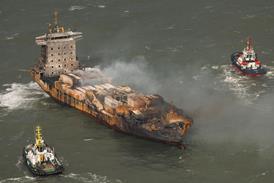



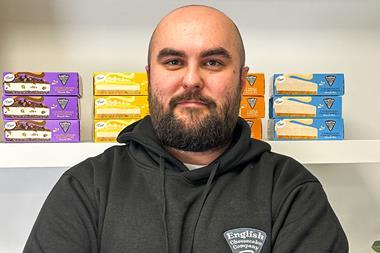
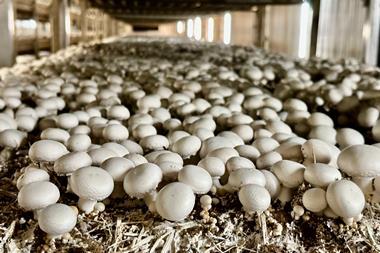
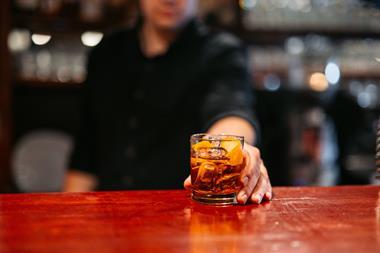
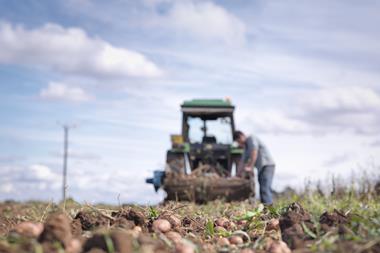
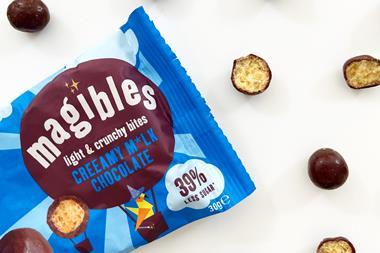
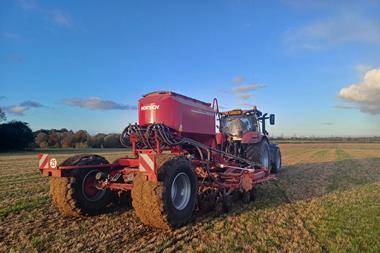





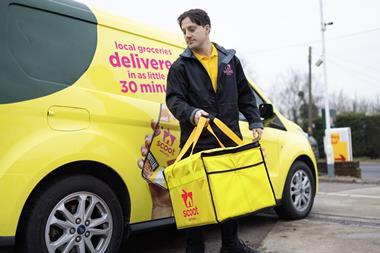
No comments yet